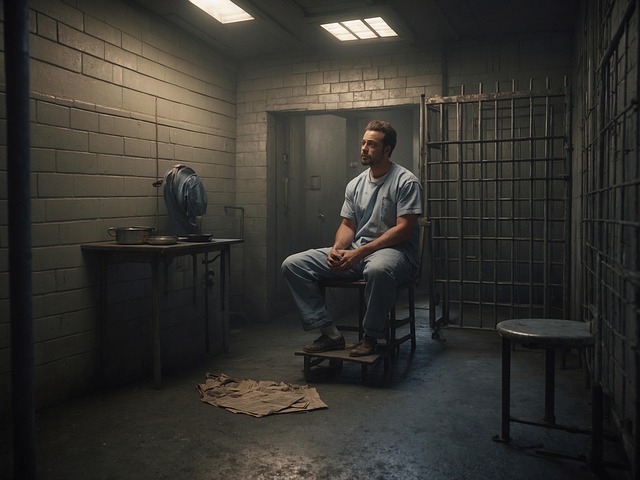Criminal law cases require understanding legal procedures and justice systems. Sentencing Guidelines Reform and Policy Changes focus on fairness, consistency, and proportionality in sentencing, reducing disparities especially for non-violent and white-collar crimes. Plea bargaining reforms aim to balance judicial efficiency with justice. The debate shifts from harsh punishment to rehabilitation through community service, restorative justice, and tailored programs. Technological advancements streamline evidence collection and analysis, impacting policy changes and legal practices.
“Criminal law cases, far from being mere legal technicalities, are intricate websof justice and societal reflection. This comprehensive guide delves into the multifaceted world of criminal jurisprudence, exploring key dynamics shaping modern legal systems. From understanding sentencing guidelines reform’s impact on incarceration rates to examining policy changes in plea bargaining, we dissect strategies balancing efficiency with justice. Additionally, we scrutinize rehabilitation vs. punishment approaches and consider technological advancements’ role in transforming criminal law proceedings.”
- Understanding Criminal Law Cases: A Comprehensive Overview
- The Impact of Sentencing Guidelines Reform on Incarceration Rates
- Policy Changes in Plea Bargaining: Balancing Justice and Efficiency
- Rehabilitation vs. Punishment: Exploring Alternative Sentencing Options
- Technological Advancements and Their Influence on Criminal Law Proceedings
Understanding Criminal Law Cases: A Comprehensive Overview

Criminal law cases encompass a wide range of legal proceedings that address crimes and their repercussions. Understanding these cases involves grasping the intricate interplay between laws, evidence, and justice systems. The process begins with the investigation and prosecution of suspected offenders, followed by court appearances where both sides present their arguments. Jury trials play a pivotal role in many high-stakes cases, demanding meticulous preparation from all involved, including corporate and individual clients alike.
Over time, Sentencing Guidelines Reform and Policy Changes have significantly shaped how criminal law cases are resolved. These reforms aim to ensure fairness and consistency in sentencing while taking into account the specific circumstances of each case. By balancing deterrence, rehabilitation, and proportionality, these changes reflect a broader societal shift towards more nuanced approaches to crime and punishment.
The Impact of Sentencing Guidelines Reform on Incarceration Rates

The Sentencing Guidelines Reform has significantly influenced incarceration rates, bringing about notable shifts in the criminal justice system. These policy changes aim to promote fairness and consistency by reducing the discretion that judges previously had when imposing sentences. This reform particularly targets high-profile cases involving violent offenses, ensuring more uniform punishments across similar crimes. As a result, there has been a noticeable decline in lengthy prison sentences for non-violent offenders, which was a common issue under the old guidelines.
The impact on white-collar and economic crimes is especially relevant, as these cases often involved complex sentencing considerations. With the new reform, general criminal defense strategies have also evolved, focusing more on mitigating circumstances and alternative punishments. The respective business community has taken notice, emphasizing the need for proportional sentencing while addressing societal concerns about crime rates and public safety.
Policy Changes in Plea Bargaining: Balancing Justice and Efficiency

In recent years, policy changes in plea bargaining have gained significant attention, driven by a desire to balance the pursuit of justice with the need for judicial efficiency. Sentencing Guidelines Reform has played a pivotal role in this evolution, aiming to reduce disparities and ensure more consistent outcomes for defendants. These reforms are particularly relevant for corporate and individual clients alike, as they navigate complex legal landscapes.
The shift towards more flexible plea bargaining strategies reflects a growing recognition that one-size-fits-all sentencing may not always serve the best interests of justice. By allowing for negotiated pleas, courts can decongest their dockets while still addressing the underlying issues. This approach benefits respective business and individual clients by potentially reducing prison sentences and facilitating quicker resolutions, thereby saving time and resources for all involved parties.
Rehabilitation vs. Punishment: Exploring Alternative Sentencing Options

In the ongoing debate surrounding criminal justice reform, the fundamental tension between rehabilitation and punishment has sparked significant discussions. The traditional approach leans heavily on harsh punishments as a means to deter crime, while a more contemporary perspective advocates for alternative sentencing options focused on rehabilitating offenders. This shift is driven by the recognition that criminals are often products of their environment, trauma, or systemic issues. Sentencing Guidelines Reform and Policy Changes play a pivotal role in this transformation, allowing judges greater discretion to consider factors beyond the crime itself. By adopting approaches like community service, restorative justice practices, and specialized programs tailored to specific offenses or offender needs, the criminal justice system can foster change while addressing the root causes of criminal behavior.
Alternative sentencing methods not only offer a more holistic approach but also benefit the philanthropic and political communities by promoting reintegration. For his clients, these options can mean a chance at redemption and a path toward productive lives, reducing recidivism rates. Ultimately, respecting the dignity and potential of every individual—even those who have committed crimes—is essential to building stronger communities. These policy changes reflect a growing understanding that punishment alone is not enough; effective crime prevention requires a comprehensive strategy that empowers both the criminal justice system and the respective business of rehabilitation.
Technological Advancements and Their Influence on Criminal Law Proceedings

Technological advancements have significantly reshaped criminal law proceedings. Digital forensics now plays a pivotal role in investigations, enabling more precise and efficient evidence collection. Advanced data analytics tools assist prosecutors and defense attorneys in uncovering patterns and insights from vast datasets, enhancing case strategies. Additionally, video surveillance systems with enhanced AI capabilities can provide crucial evidence, while real-time communication technologies facilitate seamless interactions between legal professionals, witnesses, and clients—whether corporate or individual.
These innovations have not only streamlined judicial processes but also prompted policy changes and sentencing guideline reform. As technology continues to evolve, so do the expectations of society and the legal system. This shift necessitates adaptations in legal practices to ensure justice is served effectively. Changes range from modifying evidence admissibility standards to updating privacy regulations to reflect the digital age—all aimed at maintaining a fair and transparent criminal justice system that benefits all segments of society, including philanthropic and political communities, for his clients.
In conclusion, the evolution of criminal law cases involves a delicate interplay between justice, efficiency, and technological advancements. The article has explored key aspects such as understanding criminal law cases, the impact of sentencing guidelines reform on incarceration rates, policy changes in plea bargaining, rehabilitation versus punishment, and the influence of technology. Through these discussions, it’s evident that both sentencing guidelines reform and policy changes play crucial roles in shaping modern criminal justice systems. Balancing these elements is essential to ensure fairness while addressing societal needs effectively.






